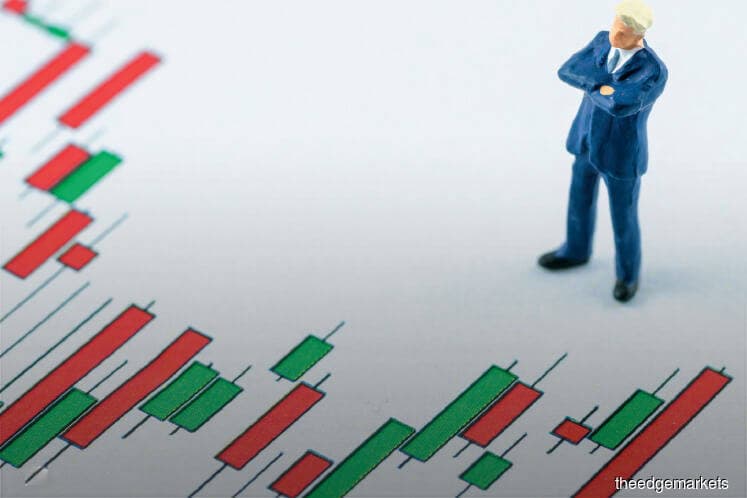
This article first appeared in The Edge Financial Daily on October 4, 2017
The market fell for two consecutive weeks on a lack of catalysts and bearish regional market performances. Falling commodity prices and a weaker ringgit dampened market sentiment. The FBM KLCI fell 0.9% in a week to 1,755.58 points last Friday. Yesterday, the index rebounded and closed at 1,759.67 points.
Market volume slightly declined last week. The average daily trading volume last week fell to 2.7 billion shares from 2.8 billion shares two weeks ago. The average daily trading value fell sharply to RM2.5 billion from RM2.9 billion. This showed that more lower-capped counters, which are normally favoured by retail market participants, were being traded.
Foreign investors’ confidence was stifled by the weaker ringgit. Foreign institutions continued to sell and last week, it was more intense. Net selling from foreign institutions last week was RM967 million, while net buying from local institutions and retailers was RM876 million and RM91 million respectively.
For the FBM KLCI, decliners outpaced gainers two to one. The top gainers for the week were Axiata Group Bhd (+3.2% in a week to RM5.24), KLCC Properties and REITS — Stapled Securities Bhd (+2.6% to RM8) and Astro Malaysia Holdings Bhd (+2.6% to RM2.82). The top decliners were RHB Capital Bhd (-4.7% to RM5.03), Genting Malaysia Bhd (-3.9% to RM5.38) and Malayan Banking Bhd (-3.3% to RM9.53).
Markets in Asia were generally bearish, but Western markets ended higher. The decline in Asia was led by Hong Kong; the Hang Seng Index fell 1.2% in a week after climbing to a two-year high two weeks ago. In Europe, Germany’s DAX led the indices with a 1.9% increase in a week, the highest in three months.
The US dollar continued to strengthen against major currencies. The US Dollar Index rose from 92.2 points two weeks ago to 93.1 points last Friday. The ringgit was slightly weakened against the US dollar from RM4.20 in the previous week to RM4.22 to a US dollar last Friday.
On commodities, a stronger US dollar pressured gold prices. The Commodity Exchange gold price continued to decline on the stronger greenback. The price fell 1.4% in a week to US$1,282.50 (RM5,437.80) an ounce last Friday, the lowest in a month. Crude oil (Brent) increased 1.1% to US$57.51 per barrel after pulling back from a two-year high. In the local market, crude palm oil futures fell 1.5% in a week to RM2,697 per tonne.
The FBM KLCI is currently near the crucial support level at 1,750 points. The index has been supported a few times at this level since May, making it a crucial support level for the bullish trend that started at the beginning of this year. This level is also the “neckline” of the confirmation of a bearish reversal pattern called the “double top” since May.
Trend-wise, the FBM KLCI is bearish in the short term below the 30-day moving average. The index failed to rebound from the Ichimoku Cloud indicator last week, and this indicated that there was no support. The indicator also indicated that the trend was turning bearish as the Cloud was turning bearish moving forward.
Momentum indicators were indicating strong bearish momentum. The Relative Strength Index and momentum oscillator declined sharply, while the moving average convergence divergence indicator also continued to fall. Furthermore, the FBM KLCI fell below the bottom band of the Bollinger Bands indicator. However, these momentum indicators also indicated that the index was oversold and hence might stage a rebound.
The support level for the index is at 1,750 points based on the 50% Fibonacci retracement level form the bullish trend that started early this year. If it can stay above this level, the index may rebound and test the immediate resistance level at 1,780 points. However, if the FBM KLCI fails to be supported above 1,750 points, we may see it fall to the next support level at 1,700 points.
The above commentary is solely used for educational purposes and is the contributor’s point of view using technical analysis. The commentary should not be construed as an investment advice or any form of recommendation. Should you need investment advice, please consult a licensed investment adviser.